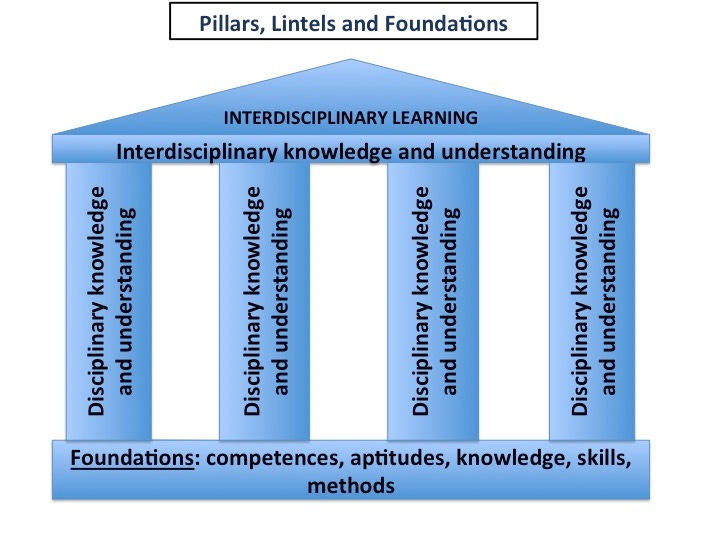What is IDL?
"The student who can begin in early life to think of things as connected.....has begun the life of learning". Mark van Doren (poet, writer, critic) 1943.
Interdisciplinary learning (IDL) is a way of thinking and learning in which learners draw on knowledge, understanding and skills from two or more subjects in order to solve a problem or advance our understanding of a concept or idea that extends beyond the scope of any one subject. IDL enables the transfer and application of subject knowledge and language to other areas of learning and to new problems. It is not a substitute for subject-based learning – on the contrary, disciplinary and interdisciplinary learning are complementary and interlinked. IDL cannot exist separately from disciplines but is founded on strong disciplinary knowledge, understanding and skills. It should complement and enrich subject learning, facilitate learning across subject boundaries, and enable students to use their learning beyond the situation in which the learning occurred.
Featured image: Whitelee Wind Farm, nr Glasgow. CC BY-3.0 Author: BJ Mullan
The development of IDL requires breadth of subject knowledge and skills. That is why it is commonly developed collaboratively. The principles and practice of IDL as a way of thinking and learning apply across all areas of learning and teaching, including further and higher education.
IDL is often used (and misused) as a general term for various types of learning that involve the wider use, connection and application of disciplinary knowledge (‘making connections between subjects’), such as (for example) multidisciplinary-, project-based, inquiry-based - or problem-based learning. All have their place.
Interdisciplinary learning and multidisciplinary learning are often confused. Simply linking discrete subjects with no immediate connection together around a theme is multidisciplinary, not interdisciplinary.
“Conflicting understandings of what IDL is” was recognised by teachers and educators at the RSE IDL conference as one of the major challenges of IDL implementation. This is why a concise working definition of IDL is important in providing a ‘benchmark’ for its development and practice, even although in practice there are many possible creative contexts, starting points and approaches to the development of IDL and some ‘fuzziness’ and latitude around this definition.
A helpful metaphor for IDL is that of pillars, lintels and foundations. IDL should continue to be founded on deep and coherent pillars of subject knowledge, understanding and skills. Interdisciplinary learning will lack rigour and utility if not part of a structure in which the disciplines are the pillars, with the interdisciplinary working as the lintels. Without the disciplinary pillars, the interdisciplinary lintels will fall. The pillars and lintels are supported by foundations – competences, aptitudes, basic knowledge, skills and methods in and across all subjects, including literacy and numeracy.
There is an ever-increasing need for the integration of both specialist and broad knowledge in the modern workplace and in the wider world. Subject-specific knowledge is no longer the primary determinant of suitability in most graduate recruitment. However, IDL is not just about equipping students with more useful skills for the workplace; it is more broadly about providing students with experiences that foster a lifelong love for learning, creativity and community.
Click here to access the RSE IDL Conference Introduction paper (2019).
Click here to read more about disciplines.



